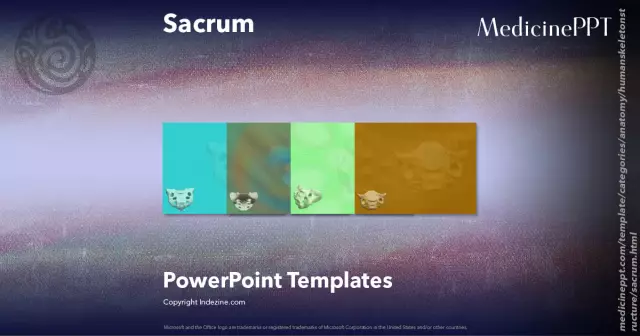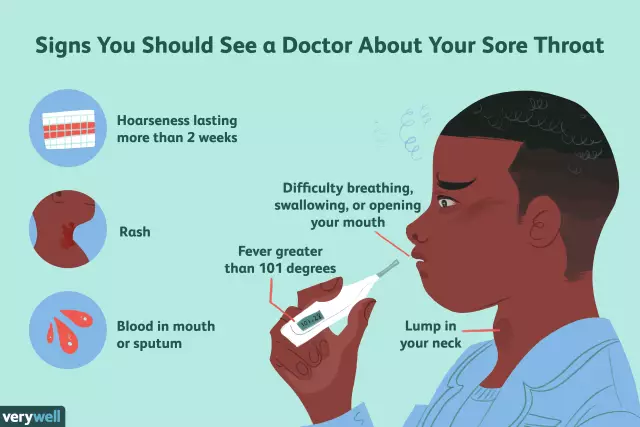- Author Rachel Wainwright [email protected].
- Public 2023-12-15 07:39.
- Last modified 2025-11-02 20:14.
What to do when the sacrum hurts

The causes of sacral pain are varied and can be roughly divided into the following groups:
- Injuries;
- Defects and anomalies of the spine;
- Infectious diseases;
- Dysfunctions of the reproductive system;
- Tumors.
Sacrodynia most often manifests itself with sudden movements or heavy lifting.
Injuries in which the sacrum hurts
Sacral pain due to injury is accompanied by spasm of the sacro-vertebral muscles, as well as swelling, nausea, and headache. With a severe fracture of the sacrum, hemorrhage and skin detachment occur. The pain spreads to the lumbar and groin areas. A fracture or dislocation can be caused by a fall or impact on the lumbar spine, and most often the upper articular processes are damaged. In addition, sacrum displacement and dislocation can occur during late pregnancy or childbirth.
If the sacrum hurts due to problems in the iliac joints, then different symptoms of damage are observed on each side. Displacement in the right iliac joint leads to impaired blood circulation in the right leg. As a result, pain and cramps appear in the muscles, possibly disruption of the stomach, liver and intestines. Damage to the pelvic bones on the left causes a predisposition to colds, frequent constipation and disturbances in the functioning of the lungs and heart.
Treatment for sacral pain resulting from injury depends on the severity of the injury. Bed rest is usually prescribed for 2-8 weeks. Pain relief is carried out with the help of drugs. If the sacrum hurts even after novocaine blockade, then its distal fragment is removed along with the coccyx. Surgery is also required in cases of internal bleeding and an unstable fracture. After the bones grow together and the bed rest is canceled, massage, physiotherapy and physiotherapy exercises are prescribed for the gradual resumption of human motor activity. Sitting after a fracture is allowed only after two months.
Trauma can be accompanied by the addition of infections, for example, tuberculosis pathogens, pyogenic bacteria and other pathogenic microflora. With infectious diseases, the sacrum hurts constantly, even during rest. The nature of the pain and its intensity may vary depending on the type of injury. Often, abscesses form in the coccyx area.
What diseases of the spine hurts the sacrum
Most often, the sacrum hurts due to advanced osteochondrosis of the sacral spine. But isolated sacral osteochondrosis practically does not occur. As a rule, it occurs with degenerative changes in the lumbar spine, which subsequently spread to the sacrum. This process is accompanied by lumboishalgia, in which the blood supply to the leg is disrupted and its sensitivity decreases.
With lumbosacral osteochondrosis, the nature of the pain in the sacrum is aching, pulling, sometimes burning. Some pain relief comes from standing or lying down, while exercise, coughing, or sitting on a hard surface aggravates it. Pain along the sciatic nerve is combined with dysfunctions of the bladder, genitals and rectum.
The sacrum also hurts in some relatively rare pathologies of the spine, such as:
- Spondylolisthesis;
- Failure of the vertebral arch;
- Lumbarization;
- Sacralization.
With spondylolisthesis, the sacrum hurts due to the displacement of the fifth lumbar vertebra forward in relation to the first sacral vertebra. The result is a narrowing of the spinal canal and pinching of the nerves. Most often this is manifested by pain when walking or standing, since in these positions the size of the intervertebral foramen decreases, through which the nerve roots exit.
Non-closure of the arch of the lumbar and sacral vertebrae is the cause of pain in the sacrum when the trunk is tilted back and other movements, since the spinal canal is incompletely closed. This pathology can lead to the early development of osteochondrosis and scoliosis.
Lumbarization is the formation of an additional lumbar vertebra, which becomes the first sacral vertebra that has lost its connection with the sacrum. The risk of scoliotic deformity of the spine arises when one of the transverse processes grows larger than the other.
Sacralization is the opposite process, in which the number of vertebrae in the lumbosacral region decreases due to their fusion. The sacrum hurts only with a mobile type of vertebral articulation.
Treatment of osteochondrosis and other developmental anomalies of the spine can be carried out in a conservative way. However, despite the existence of many effective techniques, most patients need surgical treatment.
Sacrodynia for disorders of the reproductive system
In women, sacral pain can be caused by a number of gynecological pathologies:
- External endometriosis;
- Back parametritis;
- Uterine cancer;
- Retroversion of the uterus;
- Relaxation of the uterosacral ligaments;
- Inflammation of the ovarian epididymis;
- Phlebeurysm.
In all these cases, pain in the sacrum in women increases with movement and physical exertion, as well as during menstruation.
Sacrodynia during pregnancy can occur for the following reasons:
- With a large abdomen, the center of gravity shifts, so women often arch their back in the lower back. This deflection eventually causes pain in the sacral spine;
- When placing the fetus in the occipital position on the sacrum and pelvic bones, the back of the growing child is constantly pressed;
- When the position of the fetus changes, sacrodynia is caused by increased muscle tension in the lumbosacral spine.
In men, aching pains in the sacrum accompany the course of chronic prostatitis. Pain is rarely localized only in the lumbosacral region or in the testes. Basically, it passes into the suprapubic region, rectum and external genitalia. This is due to the spread of inflammation to the seminal glands.
Treatment for pain in the sacrum caused by these disorders should be carried out by the appropriate specialists after a thorough diagnosis of the disease.
When the sacrum hurts with tumors

The sacrum often hurts when the tumor developed asymptomatically, without showing itself. And only in the later stages, when metastases are formed, constant aching pains appear in the sacrum. The initial localization of the tumor is almost irrelevant, since the sacrum is affected by multiple lymphoma or myeloma, as well as metastases of kidney, lung, stomach and other organ cancers.
In the case of cervical cancer, the uterosacral ligaments are stretched. Pain can be expressed both on one side of the sacrum and in its center.
In prostate cancer, the sacrum hurts when metastases travel to the lower spine.
The choice of treatment for sacral pain caused by a neoplasm depends on the type of tumor and the degree of its development. This can be surgery, chemotherapy, or radiation.
Found a mistake in the text? Select it and press Ctrl + Enter.






